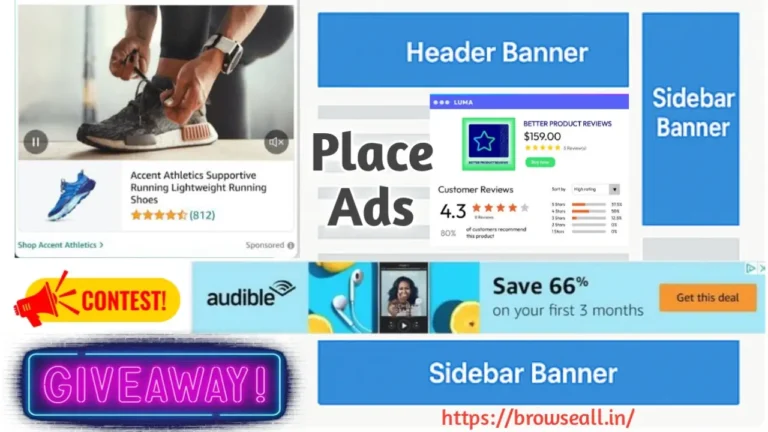How to do Perfect On-Page SEO to R ank your site on Google - SEO Optimization
In the competitive world of digital marketing, optimizing your website for search engines is essential to stand out and attract visitors. On-Page SEO is a powerful strategy that focuses on optimizing individual pages to rank higher and drive more organic traffic. In this post, we'll guide you through a simple, step-by step process to master On-Page SEO, helping your website achieve better rankings and provide a a seamless user experience. Whether you're a beginner or looking to refine your skills, this guide has everything you need to get started. Here is a step-by-step guide to doing perfect On-Page SEO to help your website rank well in search engines :
Perfect On-Page SEO Strategy - Step 1 - Keyword Research
Find Relevant Keywords : Use tools like
Google Keyword Planner,
Ahrefs, or
SEMrush to find keywords your target audience is searching for.
Focus on Long-Tail Keywords : These are longer phrases with lower competition and higher intent.
Perfect On-Page SEO Strategy - Step 2 - Optimize URL Structure
Keep It Short and Simple : Use a clear and concise URL (e.g. 'example.com/on-page-seo').
Include Your Target Keyword :
Ensure the keyword is part of the URL.
Perfect On-Page SEO Strategy - Step 3 - Title Tag Optimization
Use Your Primary Keyword : Place it near the beginning of the title.
Make It Click-Worthy : Add numbers, power words (e.g., "best," "ultimate"), or
a question to attract clicks.
Keep It Short : Limit to 50–60 characters to avoid truncation.
Perfect On-Page SEO Strategy - Step 4 - Meta Description
Summarize the Page : Write a 150–160 character description of your content.
Include Keywords : Naturally
add your main keyword.
Make It Enticing : Use action words and benefits to encourage clicks.
Perfect On-Page SEO Strategy - Step 5 - Header Tags (H1, H2, H3)
Use H1 for the Main Title : The H1 should
include your target keyword.
Structure Content with H2 and H3 : Break down the content into sections and use keywords naturally in subheadings.
Perfect On-Page SEO Strategy - Step 6 - Content Optimization
Write Quality Content : Ensure the content is unique, valuable, and answers user queries.
Use Keywords Strategically : Place them naturally in the first 100 words, headings, and throughout the text.
Avoid Keyword Stuffing :
Overusing keywords can harm rankings.
Add LSI Keywords : Related terms and synonyms help search engines understand context.
Perfect On-Page SEO Strategy - Step 7 - Internal Linking
Link to Related Pages : Use descriptive anchor text to guide users to other parts of your website.
Improve User Experience :
Help users explore more content on your site.
Perfect On-Page SEO Strategy - Step 8 - External Linking
Link to Authoritative Sites : Cite
reliable sources for additional credibility.
Use No-Follow Tags : For links you don’t want to pass link equity to.
Perfect On-Page SEO Strategy - Step 9 - Optimize Images
Use Descriptive File Names : Rename images with keywords (e.g. 'on-page-seo-guide.jpg').
Add Alt Text : Describe the image with keywords for accessibility and SEO.
Compress Images : Use tools like TinyPNG to
reduce file size for faster loading.
Perfect On-Page SEO Strategy - Step 10 - Mobile-Friendliness
Use Responsive Design : Ensure the website works well on all devices.
Test with Google’s Mobile-Friendly Tool : Check if your site meets mobile standards.
Best On-Page SEO Strategy - Step 11 - Page Speed Optimization
Improve Loading Times : Compress files, use caching, and minimize code (CSS, JavaScript).
Use a Content Delivery Network (CDN) :
This improves performance for users across different locations.
Best On-Page SEO Strategy - Step 12 - Add Schema Markup
Implement Structured Data : Use schema.org to help search engines understand your content (e.g. reviews, FAQs, events).
Best On-Page SEO Strategy - Step 13 - Use Engaging Multimedia
Add Videos and Infographics : They make content interactive and improve engagement.
Ensure Fast Loading :
Optimize file sizes.
Best On-Page SEO Strategy - Step 14 - Ensure Readability
Write Simple Sentences : Use short paragraphs and avoid jargon.
Use Bullet Points and Lists : Break up content for easier reading.
Choose a Legible Font : Ensure text is
easy to read on all devices.
Best On-Page SEO Strategy - Step 15 - Optimize for Featured Snippets
Answer Questions Directly : Include concise answers to popular queries.
Use Numbered Lists, Tables, and Bullets : Structure content for snippet formats.
Best On-Page SEO Strategy - Step 16 - Encourage User Engagement
Add Call-to-Actions (CTAs) :
Encourage clicks, shares, or comments.
Embed Social Sharing Buttons : Make it easy for users to share your content.
Best On-Page SEO Strategy - Step 17 - Monitor and Update Content
Use Google Analytics and Search Console : Track performance and identify areas for improvement.
Update Old Content : Refresh outdated posts with current information and trends.
On-Page SEO Strategy - Conclusion
By following these steps, you can ensure that your website is optimized for both search engines and users, boosting its chances of ranking well in search results.
You can get How to do Perfect On-Page SEO for Rank your Site? and Follow this guide to step-by-step. We can't guaranteed to given 100% accurate information but we will try to give the best knowledge to you. Please read the carefully our disclaimer and privacy policy information. See kolkata ff result old chart Click here to know more.











I’m extremely inspired with your writing abilities as neatly as with the layout for your blog.
Is that this a paid subject matter or did you modify it your self?
Anyway stay up the excellent quality writing, it is rare to
peer a great weblog like this one these days. Lemlist!
Thanks. Visit again. Everything did by myself.